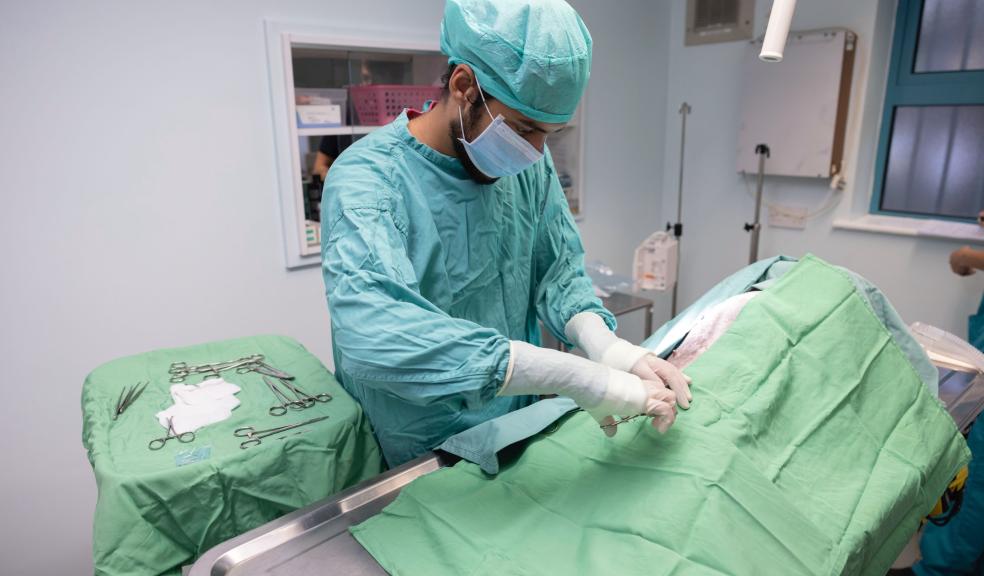
How to keep your pet calm at the vet - PDSA Weekly Pet Care Column
Going to the vets is essential in keeping your pet healthy. That's why it's so important to schedule and attend regular appointments.
Sadly, for some pets, going to the vet is a scary experience. And the last thing you and your pet need is added stress when they're sick or injured. But, with a little preparation and some helpful tools, your pet can learn that going to the vet isn't that bad after all.
PDSA Vet Nurse Nina Downing shares her top tips to help reduce your pet's anxiety and help them cope with visiting the vet for routine check-ups.
Preparation is key
"Preparing your pet for the vet will help make them a lot calmer and less stressed," explains Nina. "But, you should never delay in taking your pet to the vet if they are unwell. These are helpful tips to help you prepare for routine visits.
For all nervous pets
"Regardless of which pet you have, the vet will need to examine them once they get into the consultation room. Before your appointment, try and get your pet used to this at home.
"Depending on their size, you could try lifting and placing them on the table to softly examine them. Ask someone trusted by your pet to hold them while you look over parts of their body such as their paws, legs, eyes, and ears. Reward them with treats and praise to make this a positive experience, start this as early on in their life as you can and repeat this throughout their lives so they remain confident and comfortable with being checked over. If your pet seems worried or uncomfortable with you examining them, stop and try again another time.
"Before going to your vet appointment, take your dog out to the toilet and make sure your cat has the opportunity to visit their litter tray to prevent any accidents on the way. Avoid feeding them a large meal if your pet suffers with travel sickness. And when travelling to the vet, ensure your pet is safe and secure in the car or however you are transporting them. If they feel insecure in the car, that can make them feel worried, you might even want to ask another family member to sit next to them and talk to them gently whilst you are driving.
"It's worth asking your vet if there is a quieter time of the day for appointments. There may be a bit of a lull in the afternoon at certain practices – so it's worth checking in with your vet. If you do have a nervous pet, consider making routine appointments at the start of the consulting session as you are less likely to have a full waiting room. Your pet may be calmer in a waiting room with less pets. You may want to consider waiting outside, just remember to tell the receptionists where you are waiting, so you don't miss your appointment when called.
For nervous cats
"If you have a cat, get them used to the cat carrier ahead of the visit by:
-
Leaving it out (all of the time if possible, but at least a few weeks before) so they can sniff and explore on their own terms.
-
Place their favourite treat, toy or blanket inside.
"Your cat will be much happier to go in the carrier and settle down if they can smell their own stuff in there. Some cats will even use it as a bed or hiding spot if it's left out all the time!
"Of course, every cat is different so this might not work. If they're not keen on their carrier and want to run for the hills, try:
-
Removing the lid to begin with so it might not seem as intimidating
-
Using a pet calming spray in the carrier at least 30 minutes before your cat goes in to help keep them calm.
"But, only use vet-approved calming sprays or wipes to make sure that there are no chemicals that can harm your cat. We recommend consulting your vet before using anything.
For nervous dogs
"While exercising will not prevent anxiety in dogs, it could help them feel more relaxed if they've had a nice long walk or an active play session beforehand. However, it's worth noting that some dogs can become too excited and may become more anxious as a result. Sadly, there's not a one solution fits all – so tailor this advice to your individual dog.
"To prepare your four-legged friend for the appointment, we recommend:
-
Leaving yourself enough time before the appointment, so that your dog can take a bit of time coming in, you can reassure them and give them time to feel comfortable in their surroundings. Offering treats can help them associate the vets with something nice.
-
Making regular visits to the vet when you don't have an appointment, so they get used to it. Check if your vet practice offers 'socialisation' appointments or just pop in to get them weighed on the scales.
-
Contact your vet practice and see if they would mind if you brought in your dog to visit so they can experience the waiting room at a quiet time.
-
Rewarding your dog with small, healthy treats at every step of the way so they'll think of the vets as a nice place rather than a scary one.
"When travelling to the vet, you should:
-
Use a familiar blanket in the car for your dog as well as bringing some of their favourite toys.
-
Use a calming spray about 30 minutes before the journey if you have quite a nervous dog.
"Whilst it may be difficult, try to stay calm and relaxed. Pets can sense our feelings – so reassure them that there is nothing to be worried about. If there is anything you are worried about, just contact your vet and they'll do their best to help you."
For more pet advice visit pdsa.org.uk







